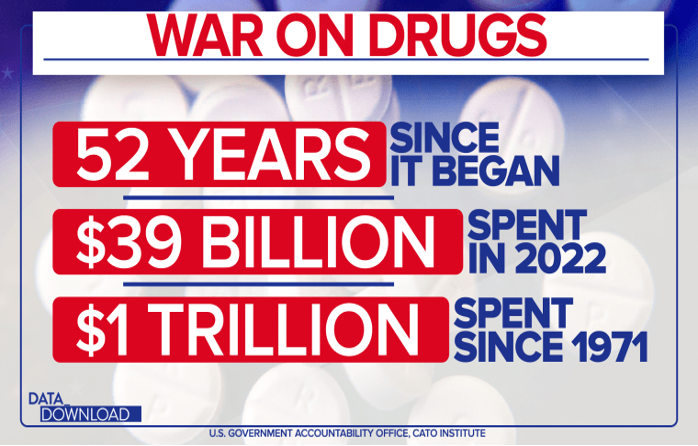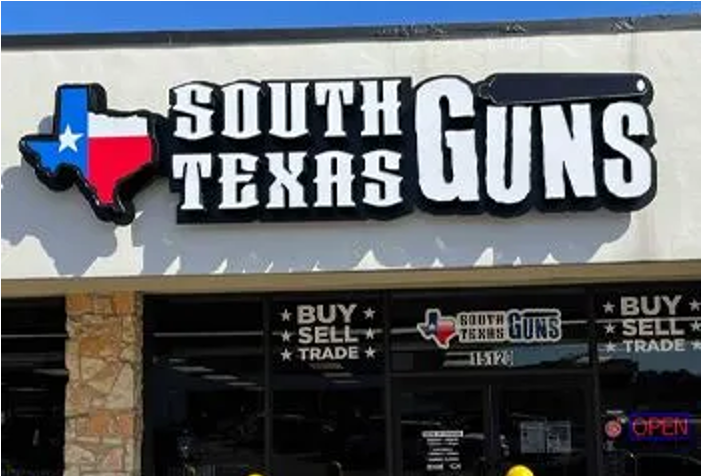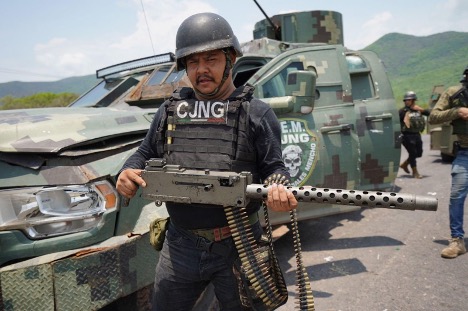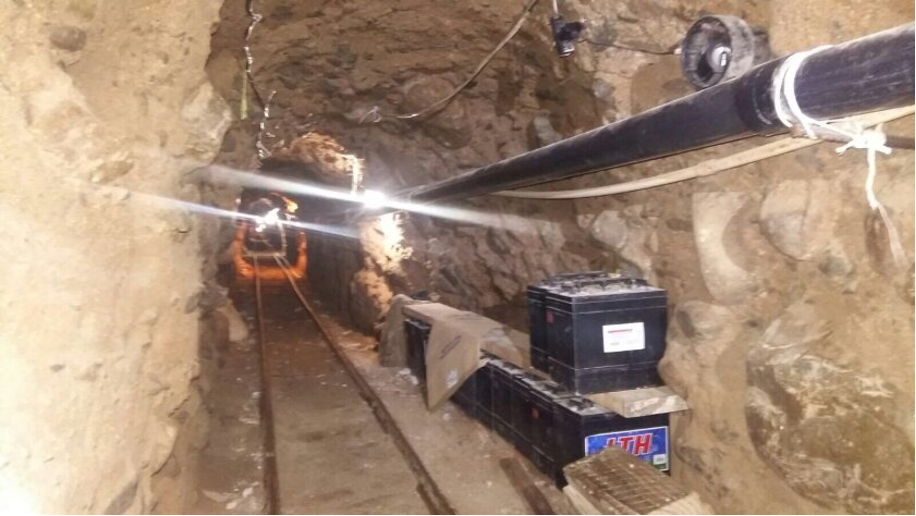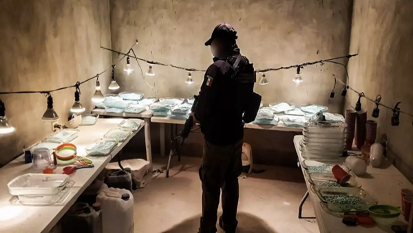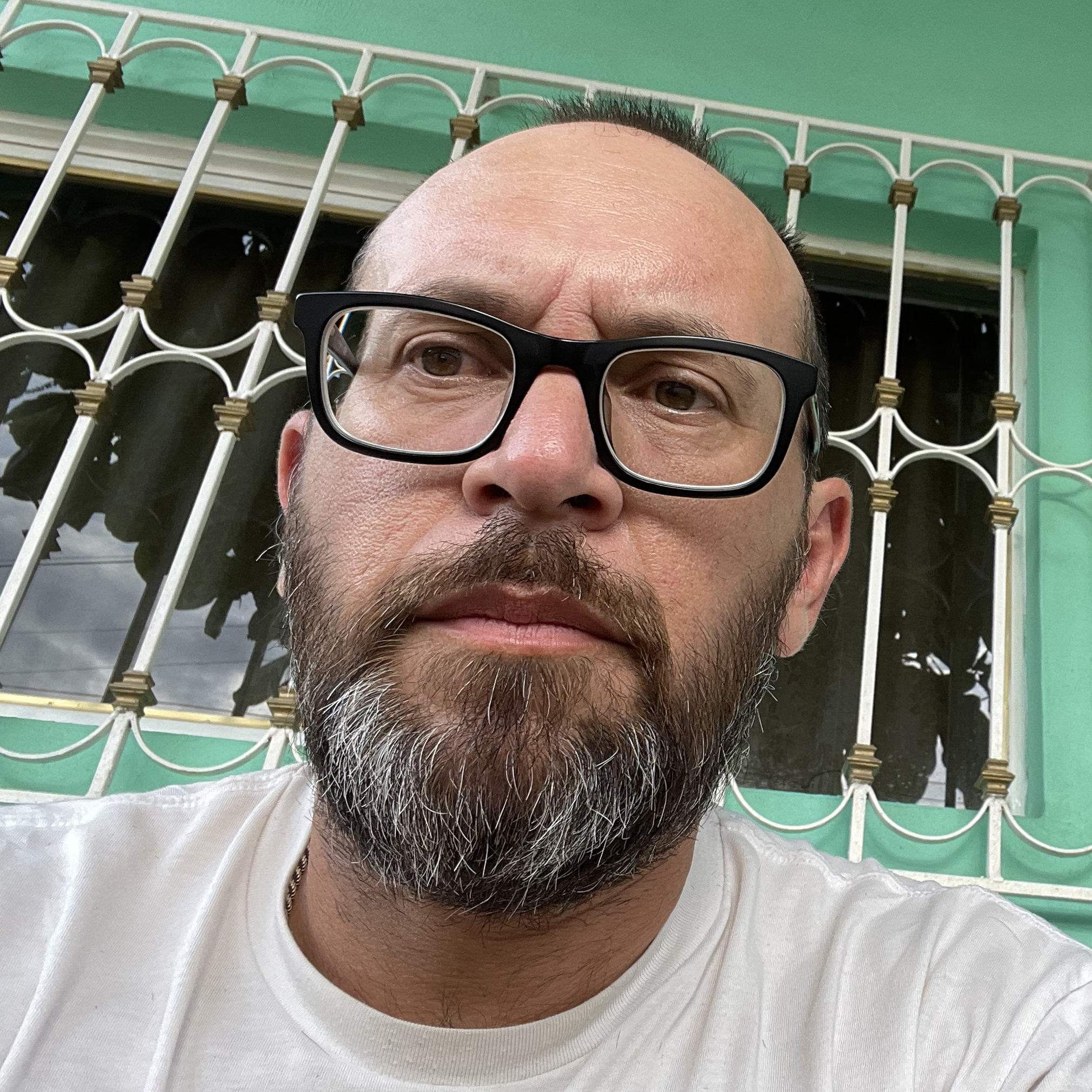|
|
|
|
The weekly newsletter of the Mexico Solidarity Project |
|
Every issue archived online at mexicosolidarityproject.org |
|
|
|
March 27, 2024/ Meizhu Lui, for the editorial team |
|
|
|
War on Drugs: The Numbers Tell the Story |
|
|
Before the War on Drugs hit Mexico, the homicide rate was about 10 homicides per 100,000 people. The US expanded its military approach to the US drug crisis into Mexico by negotiating an agreement in 2006 with then president Calderón. The result? During his six-year term, the homicide rate shot up by almost 193% and in 2018 hit its peak (almost 30 deaths per 100,000) under president Peña-Nieto. (The latest data: the homicide rate has declined 20% since AMLO took office, but is still almost double pre-2006 levels.)
The reason for this catastrophic intervention was to reduce US drug deaths. But between 2002 and 2022 the overdose death rate quadrupled; in 2022, about 33 people per 100,00 died — a death rate higher than the Mexican homicide rate at its peak!
For 50 years, the US framed the drug crisis as a national security issue rather than as a public health issue, thus the rationale for a military strategy. It’s been like using a hammer to mend a sock; a wrong analysis of the problem leads to the wrong tool to solve it.
As Patricia Escamilla-Hamm explains, the laws of supply and demand apply to drugs and guns like any other commodities. The War on Drugs failed to address demand. As of 2020 only 6.5% of those with Substance Abuse Disorder received treatment, but it is only public health interventions that can drive down the demand. If demand is reduced, supply will follow.
US politicians like Trump and Texas Governor Abbott love to point the finger at Mexico for drug trafficking and failing to curb the cartels’ violence. But the twin problems of guns and drugs are made in the USA: the numbers tell the story. |
|
|
|
For a deeper dive into current news and analysis, check out our media website. |
|
Epic Fail: 50 Years of the War on Drugs |
|
|
Patricia Escamilla-Hamm’s expertise in national security grew out of her interest in US imperialism. After teaching courses on drug policy, organized crime, and national security, she joined a binational academic team to research US-Mexico border security at El Colegio de la Frontera Norte (COLEF) in Tijuana, Mexico. As a professor of national security affairs at the William J Perry Center for Hemispheric Defense Studies in Washington DC, her signature course was on combating transnational organized crime. She’s been a consultant for both the Mexican and US governments. |
|
In the US, preventing drugs from entering the US via Mexico is a major presidential campaign issue, framed as a national security concern. Is this the right framework?
No, not if the objective is to reduce the voracious appetite for drugs in the US. Americans are the largest consumers of illicit drugs and the most lucrative market for them worldwide. In 2016, Americans spent $150 billion yearly on illicit drugs, a powerful magnet that attracts drug dealers from everywhere. We can’t pretend the black market drug supply can be stopped without addressing domestic drug demand.
The US adopted a “security” framework in 1971. Nixon made a choice: science and health experts warned him that using police and military means to stop drug use wouldn’t work, but his political advisors said it would boost his popularity. He based his decision on politics, and the policy remained until 2021 — 50 years.
The “drug war” was fought within the US at first; it expanded to include Mexico in 2007. In 2006 the US and Mexico jointly agreed to the Merida Initiative, intending to take out drug cartel kingpins through military means. It became a game of whack-a-mole! If you take out one kingpin, another guy — or several others — pops up to take his place. Thus, more violence, more recruitment, more killings between rival factions. |
|
The Merida Initiative was a failure. Drug use and trafficking haven’t diminished, drug deaths have increased, and the cartels still have power. What’s that definition of insanity? Doing the same thing over and over and expecting different results? So, this is insanity! |
|
|
The drug trade is a matter of supply and demand, but US policy focuses only on the supply side. It’s ideological too: some politicians simply believe that using force is always best. As yet, the US Congress won’t shift gears.
After Mexico signed on to the US “War on Drugs,” what was the result in Mexico? |
|
|
South Texas Guns, San Antonio, TX |
|
Cartel operations multiplied and enhanced their operational capabilities. The military used guns against the cartels, so cartel demand for guns went up to defend themselves. It’s forbidden to buy guns made or sold in Mexico but easy to buy them across the border: 200,000 guns enter Mexico from the US every year. According to the US General Accounting Office, about 70% of confiscated arms have been bought from US gun shops or gun shows along the border, especially in Texas. The US is arming the enemy! |
|
The US shut down the sale of rocket-propelled weapons, but 50-caliber machine guns capable of penetrating bullet proof vests and armored vehicles, admiringly named “cop killers,” are now a cartel favorite. When there’s demand, suppliers find a way.
Also, the Merida Initiative ignited a brutal competition between cartels, generating a surge in deadly violence in Mexico: since 2007, half a million Mexicans have died from organized crime. |
|
The “war” opened the door to more corruption at every level and in both countries — from customs officials to police and military personnel to the DEA — to García Luna. He was Secretary of Public Security when the Merida Initiative was signed and implemented between 2006 and 2012, and a key US partner. In 2023, the US convicted him of colluding with the Sinaloa cartel. |
|
|
A Jalisco Cartel (CJNG) member on a highway in Michoacán |
|
The question is: did Luna “reform” the federal police structure to benefit drug trafficking? When AMLO took office, he found a corrupt and repressive federal police force, infiltrated by officials and narcos supporting the Sinaloa Cartel. It was a political tool, not a security force to protect the public. AMLO had promised to get the military out of public security, but found he needed to keep it in place while he created a new, more professional National Guard — an intermediate force, part civilian and part military. A major step — but reform is not yet consolidated.
Now, Republicans are threatening to go into Mexico to take out the cartels and destroy the fentanyl labs; is that possible? |
|
|
One of more than 140 tunnels found under the border |
|
“Shoot down the cartels.” Stupid! Do they think they’ll find a base camp and line them all up? No one knows who they are. The cartels are resilient, flexible, and rich. They hire scientists and engineers. They build tunnels under the border wide enough to drive through. The Sinaloa cartel has a submarine! |
|
And fentanyl labs are not pharmaceutical companies. They are tiny, sometimes without walls with just a canopy overhead, easy to move and set up. Fentanyl is a powder easy to conceal in a vehicle or on a person, easy to send by US mail or through Fedex — or through the dark net. If they confiscate it and the US identifies the illegal ingredients, it takes more time to analyze the stuff than it takes to change the ingredients. |
|
The Merida Initiative was finally ended in 2021 by Biden and AMLO. What did they agree to? |
|
Mexico is no longer fighting a war on drugs. Mexico and US goals are different (but related) now. AMLO wants to stop gun violence, Biden wants to stop the epidemic of fentanyl overdose deaths. AMLO couldn’t move Trump, but Biden was willing to change the framework of their cooperative efforts. The 2021 Bicentennial Framework includes these major points: |
|
|
Fentanyl production |
Do you think Claudia Sheinbaum, the probable next president, can make progress in reducing drugs, guns, and violent deaths?
Mexico remains the vulnerable partner; its margin of action is limited. The US has the upper hand on security issues and, if he wins, Trump could employ sanctions to coerce Mexico into doing things his way. In Mexico, the rule of law is still weak, and Claudia faces powerful political opponents.
That said, Claudia, as governor of Mexico City, succeeded in reducing homicides by 50%. The Mexico City police went from the worst to the best — through training and improved professionalism, salary increases and recruitment, and better investigation and intelligence capabilities. But a major reform of state and local police forces will also be necessary.
Claudia will rely on scientific methods to construct public policy and make evidence-based, not political decisions. I admire her and expect that she will indeed improve security for our people and reduce the violence. |
|
|
|
|
AP News disses AMLO — Without the Facts |
|
|
Jesús Hermosillo is a Los Angeles-based Chicano observer of politics in the United States and Mexico. His analyses from a social justice perspective and his fact-based research refute misleading or false mainstream narratives. |
|
|
The piece/ Under the headline, “Mexico’s president says he won’t fight drug cartels on US orders,” calling it a ‘Mexico First’ policy, Mark Stevenson of AP News writes that AMLO has offered “various justifications for his ‘hugs, not bullets’ policy of avoiding clashes with the cartels,” among which is a “prickly nationalism” that causes him to prioritize Mexico’s problems over those in the US.
The claim/ Stevenson’s report adds to speculation — fueled by recent media reports of old, unproven (and long-dismissed) allegations by mostly unnamed informants — that AMLO is or has been in the pay of drug cartels. It implies that the president has openly vowed to protect criminals, quoting his words out of context (“we also take care of the lives of the gang members, they are human beings”), and suggests he has done little to reduce crime.
The back story/ Stevenson cites the peripatetic president's several trips to Badiraguato, Sinaloa, a municipio (county-like jurisdiction) that happens to be a cartel stronghold — "at least a half dozen times" — without describing his reasons or mentioning his frequent visits to other regions for comparison.
It’s actually unclear if the reported number of trips there actually happened, given that not all media coverage of his travels has been factual. Moreover, AMLO’s penchant for personally overseeing major federal infrastructure projects — like the recently inaugurated Badiraguato-Parral highway now linking the states of Chihuahua and Sinaloa — could also be one reason he has visited some places more than others.
But Stevenson’s most offensive omission is what AMLO actually means by “hugs, not bullets.” Besides turning away from his predecessors’ (DEA-directed) anti-drug militarism — in step with progressive thinking on both sides of the border — the “hugs” part of the government’s approach is meant to give young and rural citizens alternatives to the lure of organized crime.
Federal programs like Youth Building the Future (paid apprenticeships) and Sowing Life (agricultural subsidies) in fact, may be partly why the 2023 homicide rate (also unmentioned by AP News) has fallen 20% on AMLO’s watch: from 29 per 100,000 residents in 2018 to last year’s 22 per 100,000.
Stevenson also sounds critical of AMLO’s apparent attitude “that Mexican cartels selling drugs to gringos [is] a US issue, not a Mexican one,” but makes no mention of the US’s failure to end the illegal trafficking of guns that make criminals so dangerous.
The bottom line/ The piece is simply the latest reminder of mainstream media’s overriding role as protector of US corporate interests, a mission made easier when the task is defaming Global South governments deemed disloyal to Washington's directives. |
|
|
|
|
Recent news reports and commentaries, from progressive and mainstream media, |
|
Sharyn Alfonsi, Aliza Chasan, Michael Karzis, & Katie Kerbstat Jacobson AMLO, Mexico's departing president, reflects on his legacy and his country's ties to the U.S. 60 Minutes. Despite the dishonest framing, this might be the closest many people in the United States of America get to hearing directly from President AMLO.
Normalistas de Ayotzinapa se deslindan de protesta con fines electorales en la Ibero Desinformémonos. El Centro de Derechos Humanos Miguel Agustín Pro Juárez (Centro Prodh) se pronunció contra la “creciente instrumentalización de la causas de víctimas para fines electorales” y señaló que “las protestas afuera de la Ibero contra una candidata a la jefatura de gobernación no están vinculadas con los padres y madres de Ayotzinapa”.
Mary Beth Sheridan and Fred Ramos, As its workers stream to the U.S., Mexico runs short of farmhands The Washington Post. A misleading title, as it reveals many Mexicans prefer to work in new manufacturing jobs in the North or in large infrastructure projects in Mexico’s north.
Ulises Rodríguez López Crean mapa con los edificios irregulares del cártel inmobiliario Revista Polemón. El Cártel Inmobiliario de la Benito Juárez es uno de los mayores problemas de la capital mexicana. No en vano la Fiscalía de la CDMX ha combatido con todo lo que está a su alcance dicho entramado de corrupción. Pues este Cártel no solo representa la especulación inmobiliaria, sino que ha desplazado a la gente de sus casas en incluso ha costado vidas.
President López Obrador highlights strength of Mexico’s economy Prensa Latina. What fills me with pride is that during the time we have been in office, 500,000 Veracruz citizens have been lifted out of poverty and five million people at a national level, said the president, who stressed that such progress has not been seen for decades.
Carlos Fernandez-Vega Mexico SA La Jornada. Mientras más patalea, más se hunde el desquiciado #RicardoSalinasPliego: de los cerca de 20 mil millones de pesos de adeudo fiscal inicialmente reclamados por el SAT, la investigación profunda ordenada por el presidente AMLO reveló que en realidad lo que el empresario de la falsa sonrisa no ha pagado en impuestos suma 63 mil millones, un monto equivalente a 34 por ciento de su fortuna que tanto presume.
Mexico presidential candidate Sheinbaum vows to boost state energy sector Reuters. The former Mexico City mayor, who has promised to be a guardian of the legacy of energy nationalist President Andres Manuel Lopez Obrador, said renewables would be a "trademark" of her government.
Gálvez ajusta su equipo Sin Embargo. Como vocero de Felipe Calderón, Maximiliano Cortázar Lara se definió por prácticas como censura y acoso contra los medios y periodistas críticos, así como privilegios y miles de millones de pesos para los aduladores.
Mexican President thanks the work of Cuban doctors Prensa Latina. Now 700 Cuban professionals are helping us, and we are very grateful to the people and the government of that nation, “because those doctors are even in the most remote villages curing our people”, the president from the southern state of Oaxaca said.
Jared Laureles, Antes de abril presentarán programa de inspecciones laborales La Jornada. En entrevista, el funcionario apuntó que todas las inspecciones que se realizarán durante este 2024 se harán con un enfoque de género, con el propósito de verificar que se cumplan en los centros de trabajo todas las disposiciones legales en la materia. |
|
|
|
|
The Mexico Solidarity Project brings together activists from various socialist and left organizations and individuals committed to worker and global justice. We see the 2018 election of Andrés Manuel López Obrador as president of Mexico as a watershed moment. AMLO and his progressive Morena party aim to end generations of corruption, impoverishment, and subservience to US interests. Our Project supports not just Morena, but all Mexicans struggling for basic rights, and opposes US efforts to undermine organizing and Mexico’s national sovereignty.
Editorial committee: Meizhu Lui, Bruce Hobson, Agatha Hinman, Victoria Hamlin, Courtney Childs, Susan Weiss. To give feedback or get involved yourself, please email us! |
|
Subscribe! Get the Mexico Solidarity Bulletin in your email box every week. |
|
Web page and application support for the Mexico Solidarity Project from NOVA Web Development, a democratically run, worker-owned and operated cooperative focused on developing free software tools for progressive organizations. |




